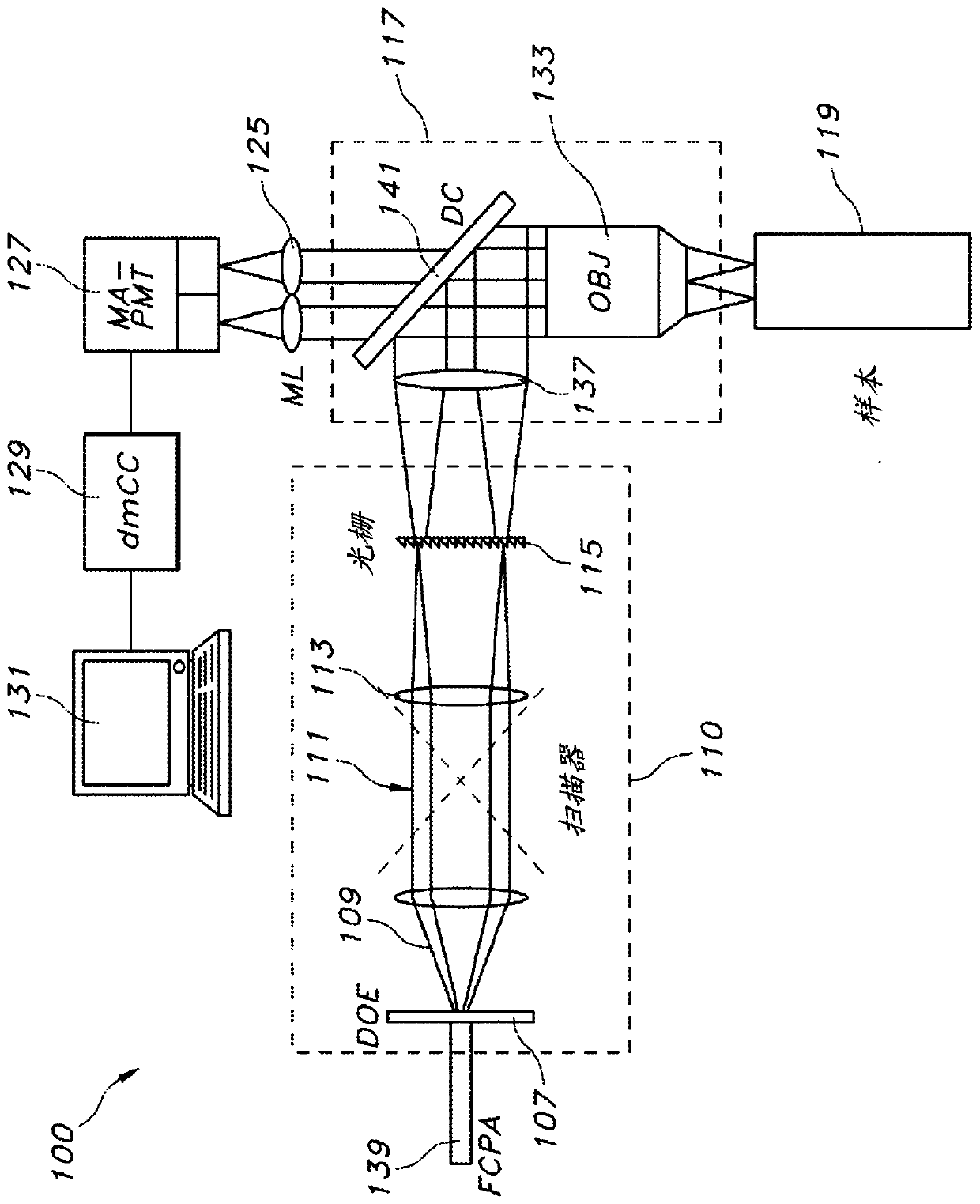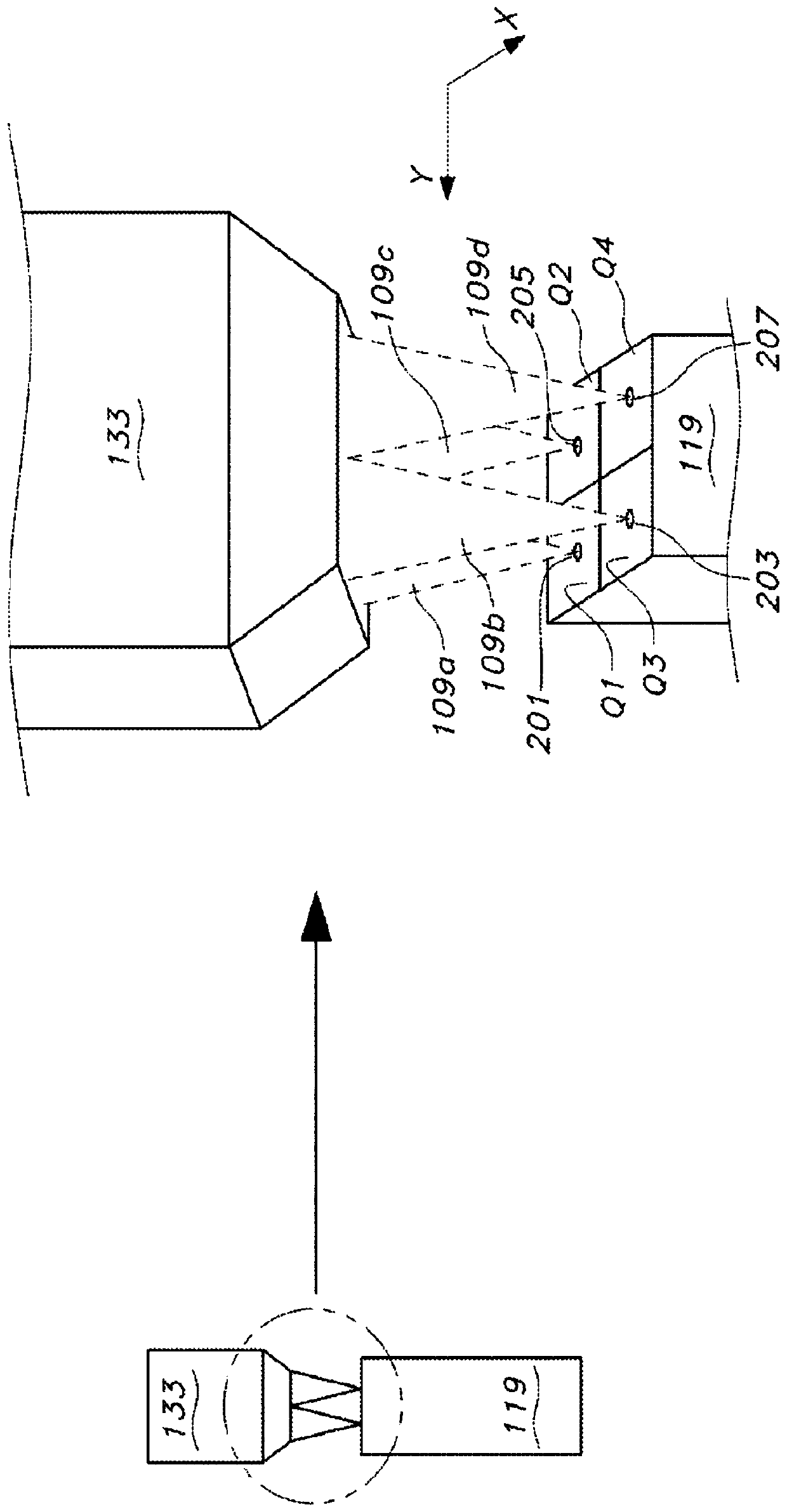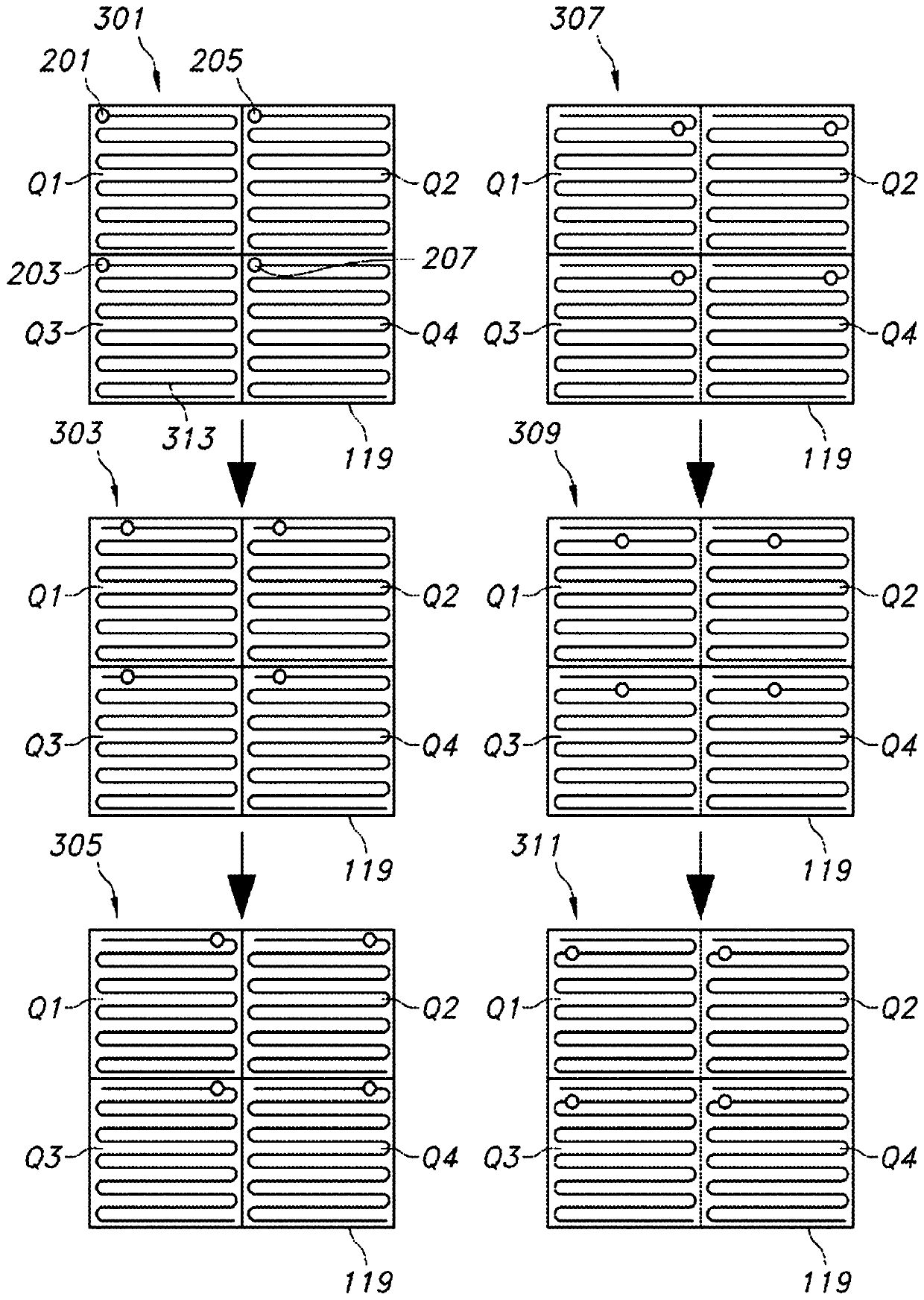High speed deep tissue imaging system using multiplexed scanned temporal focusing
An imaging system, spatial multiplexing technology, applied in the field of high-speed deep tissue imaging system using multiplexed scanning time focusing, can solve problems such as difficult to apply to awake animals, easy to scatter, and limitations imposed on the overall scanning speed
- Summary
- Abstract
- Description
- Claims
- Application Information
AI Technical Summary
Problems solved by technology
Method used
Image
Examples
Embodiment Construction
[0035] Two techniques for Multiplexed Scan Time Focusing (MuST) are disclosed herein. These two techniques include two-photon scanning microscopy and three-photon scanning microscopy. Both MuST techniques (two-photon and three-photon) disclosed provide superior performance for volumetric calcium imaging at high frame rates compared to known techniques.
[0036] figure 1 A schematic diagram of an exemplary imaging system 100 is shown. Imaging system 100 includes a pulsed output laser module 139 that outputs (or emits) a pulsed primary laser beam 109 comprising repeating ultrashort light pulses (which may be referred to as "laser pulses"). For example, laser module 139 may be implemented using, for example, a commercial or custom fiber-based chirped pulse amplifier (FCPA). The laser module 139 may output light pulses at a repetition rate of, for example, 1 megahertz (MHz) to 5 MHz. The duration of each light pulse can be, for example, less than 100 picoseconds (picosecond, ...
PUM
 Login to View More
Login to View More Abstract
Description
Claims
Application Information
 Login to View More
Login to View More - R&D
- Intellectual Property
- Life Sciences
- Materials
- Tech Scout
- Unparalleled Data Quality
- Higher Quality Content
- 60% Fewer Hallucinations
Browse by: Latest US Patents, China's latest patents, Technical Efficacy Thesaurus, Application Domain, Technology Topic, Popular Technical Reports.
© 2025 PatSnap. All rights reserved.Legal|Privacy policy|Modern Slavery Act Transparency Statement|Sitemap|About US| Contact US: help@patsnap.com



